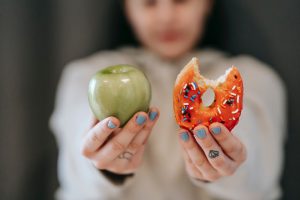 Many people in Houston, TX, are cutting back or giving up sugar completely. Does that mean they don’t eat fruit that contains sugar? In most cases, the answer is no. There are many types of sugar, but the first large division is food with added sugar and food with naturally occurring sugar. While not all naturally occurring sugar is necessarily healthy, most food with it also contains fiber. Fiber slows the absorption of sugar into the bloodstream. That helps eliminate blood glucose spikes and a rush of insulin, which can lead to insulin resistance and the accumulation of belly fat.
Many people in Houston, TX, are cutting back or giving up sugar completely. Does that mean they don’t eat fruit that contains sugar? In most cases, the answer is no. There are many types of sugar, but the first large division is food with added sugar and food with naturally occurring sugar. While not all naturally occurring sugar is necessarily healthy, most food with it also contains fiber. Fiber slows the absorption of sugar into the bloodstream. That helps eliminate blood glucose spikes and a rush of insulin, which can lead to insulin resistance and the accumulation of belly fat.
Monosaccharides are sugar’s simplest form.
Glucose, fructose, and galactose are the three simple forms of sugar. Other types of sugar are made from those three simple forms of sugar. If two different monosaccharides combine to create a new sugar, it’s called a disaccharide. Glucose is commonly found in plants. It’s what the body uses for sugar. Fructose, another monosaccharide, is also found in fruit, but also some root vegetables, and honey. Galactose is similar to glucose but found only in peas.
Common disaccharides include sucrose, lactose, and maltose.
Sucrose is another name for table sugar. It’s created from sugar beets or sugarcane. It is one part glucose and one part fructose combined. Lactose is the sugar found in dairy. People who are lactose intolerant don’t have enough lactase to break it down to the simple sugars’ glucose and galactose. Maltose is a naturally occurring byproduct when carbohydrates break down, like after the starch breaks down when plant sprouts. It’s in sprouted grain.
Sugars that are combinations of glucose and fructose can damage the body.
Both glucose and fructose absorb into the bloodstream in the small intestines. Glucose raises blood sugar levels more quickly. Glucose enters cells after insulin is released, where it’s either used for fuel, stored in muscle tissues, or goes to the liver for storage in the form of glycogen. Fructose doesn’t raise insulin levels as quickly. It goes directly to the liver and the liver stores it and later converts it to glucose. When glucose and fructose, it increases the amount of fructose absorbed. It’s unhealthy to eat the two together. It occurs with table sugar and other types of sugar, like high fructose corn syrup.
- Excess fructose causes the liver to become overburdened. It only occurs with added sugar and naturally occurring fructose doesn’t have the same effect, possibly from a different combination of glucose and fructose.
- High fructose corn syrup—HFCS— is widely used in products with added sugar. Table sugar is a 50/50 combination of glucose to fructose, while HFCS ranges from 55% fructose to 90% fructose, making it even more damaging.
- Both food with added sucrose—table sugar—and HFCS are bad for the body. Naturally occurring combinations of fructose and glucose don’t have the same effects and provide nutrients.
- High amounts of fructose can create metabolic disease, nonalcoholic fatty liver disease, and raise triglyceride levels.
For more information, contact us today at Reggie C. Fitness
